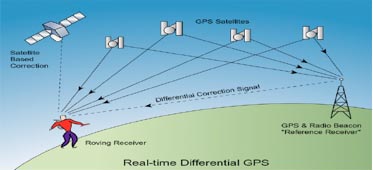Glossary of Aviation Terms | Navaids
Navaids | Paramount Business Jets
NAVAID stands simply for navigational aid. It is any form of device that guides the pilot and his aircraft from one area to another. There are many kinds of NAVAIDs in use today, and their principal uses are to provide guidance, location, and direction.
Very-high frequency omnidirectional ranges (VORs) are the main NAVAID that supports the United States airway system. They are located at various airports and consist of 3 main types: high, low, and terminal. Depending on your altitude and distance from the VOR, it will determine the best one for use. They provide a bearing to and from the NAVAID as well as magnetic direction. Non-directional beacons (NDB) are another form of NAVAID used, but these are more so for approaches. Really popular in the mid 1900s, they were more or less phased out for navigation by the VOR. An NDB broadcasts a signal on an AM frequency and, with the help of an automatic-direction finder (ADF), an instrument in the airplane, gives the pilot a direction to the beacon. Unlike VORs, NDBs have a series of errors associated with them and are less reliable.

Perhaps the most popular form of NAVAID in today’s world is the Global Positioning System, or GPS. This is a system employed by the United States Department of Defense and then handed over to the public, which can provide your current location accurate up to 99.7%, or 5 feet. It uses a complex system of no less than four satellites to provide you with time, distance, direction, location, altitude, and velocity. In more advanced aircraft systems, it can provide the relative wind, the direction of wind with respect to the movement of the plane, ground speed, true airspeed, and an estimated time of arrival at its destination.
However, a NAVAID does not have to be technology-based. It can be any form of publication or tool that can help a traveler find their way. Things like maps and compasses are forms of NAVAIDs.
Charter flight operation jets and airliners will generally have more advanced forms of NAVAIDs in their cockpits. The flight-management system, or FMS, is a management computer on the flight deck that incorporates all the flight aspects of navigation into one computer. It gives the pilots information about loaded approaches and departures in and out of airports, navigation to and from airports, fuel quantity, time, distance, speed, location, altitude, flight attitude, and anything else that involves the movement of the aircraft. Certain FMS computers will even have weather information loaded into them to allow for the safe navigation around potential hazardous weather phenomena.
Explore More Aviation Terminology
- GPS | Paramount Business Jets
- ICAO Code | Paramount Business Jets
- One-Ways | Paramount Business Jets
- Indirect Air Carrier | Paramount Business Jets
- Carbon Emissions | Paramount Business Jets
- Lift | Paramount Business Jets
- Charter Operator | Paramount Business Jets
- Helipad | Paramount Business Jets
- Visual Meteorological Conditions | Paramount Business Jets
